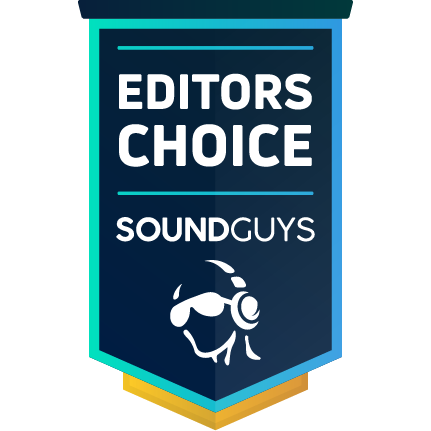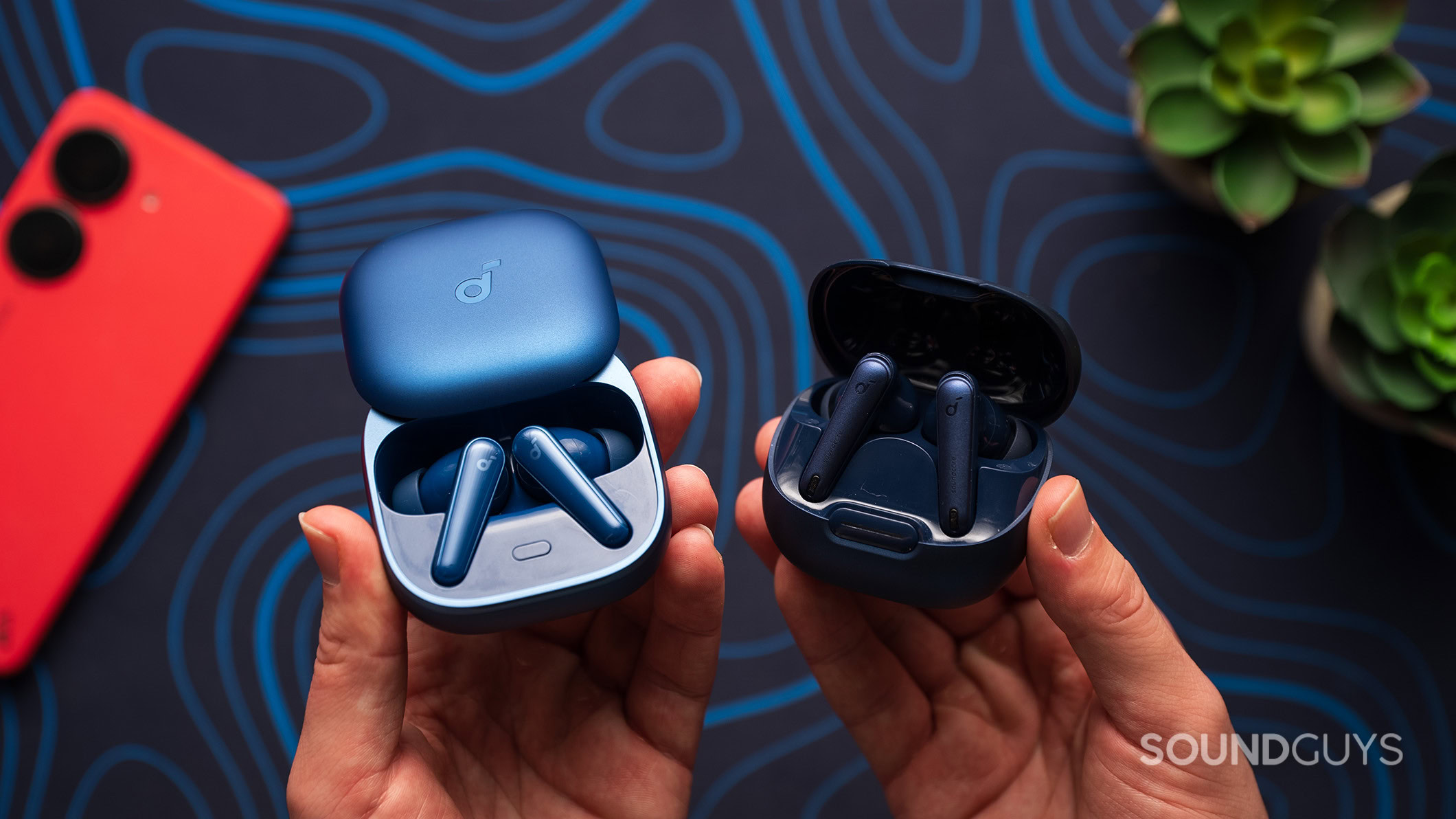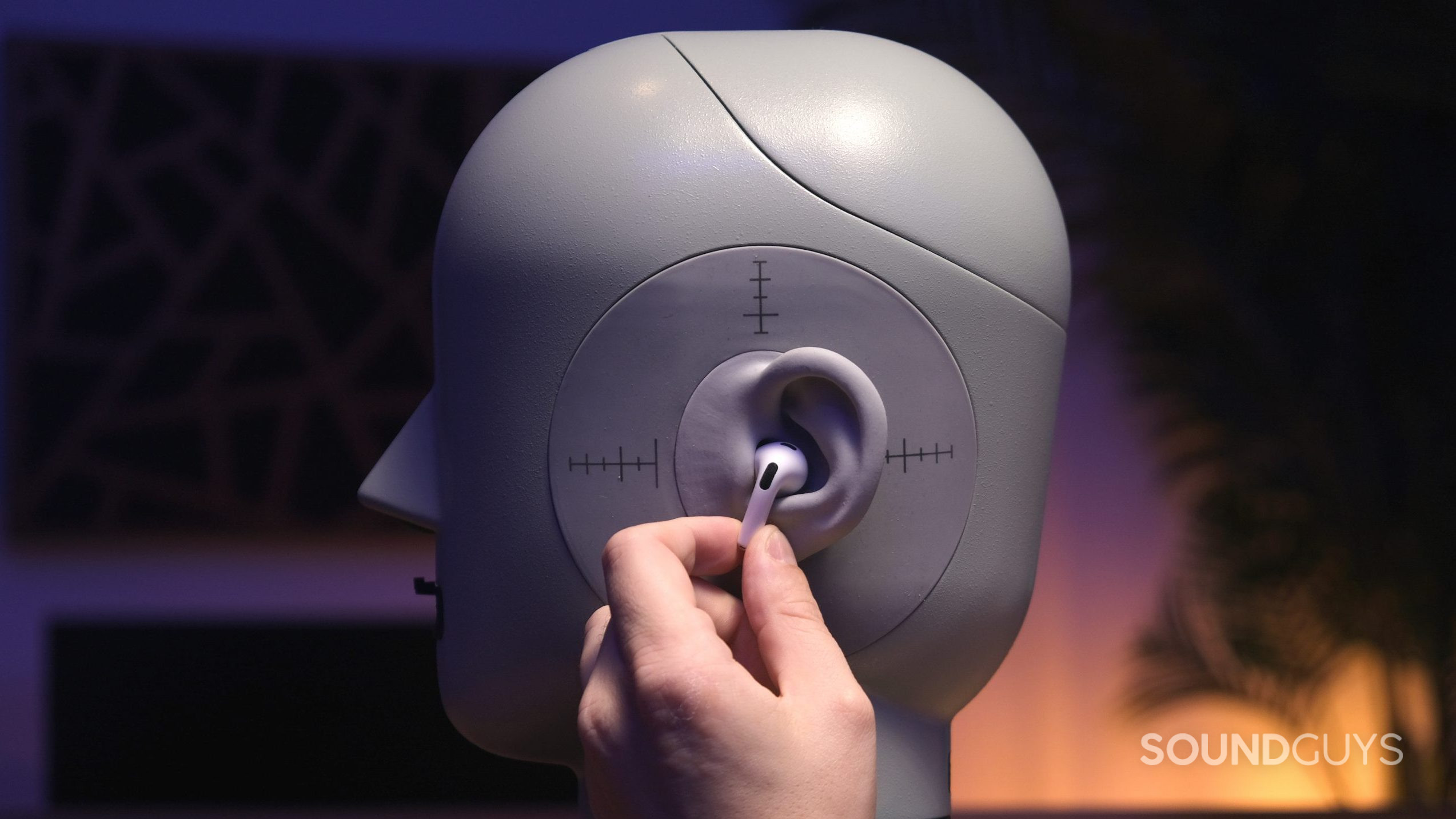All products featured are independently chosen by us. However, SoundGuys may receive a commission on orders placed through its retail links. See our ethics statement.
The best wireless earbuds under $200: Great sound, affordable prices
June 2, 2025
True wireless earbuds are the most popular way of listening to music in 2025. It’s no wonder why, thanks to the convenience of slotting your earbuds into your pocket. With increased competition and advancements in technology, you can now get great wireless earbuds for less than $200. Within this budget, you can expect earbuds that sound good, have active noise canceling (ANC), and enough battery life to get you through a full day of use.
We objectively test the performance of all of the earbuds on this list in our SoundGuys testing lab, measuring data such as the frequency response and total ANC noise reduction. To determine whether or not you will enjoy the way a product sounds, we use the MDAQS algorithm to provide sound quality scores from a virtual panel of listeners. Using our test measurements, we compile product ratings on a scale from 0-10 to determine overall performance. We award the SoundGuys Recommended badge to products that we would recommend to friends and family, and the SoundGuys Editor’s Choice badge to the products that stand out as the best in their class. We then combine the test data with hands-on insights from our team of audio experts to compile a roundup of products that are actually worth buying.
Below, we’ve outlined our picks for the best wireless earbuds that cost less than $200. If you are looking for even more affordable options, make sure to take a look at our roundup of the best earbuds under $100. On the other hand, if you want the absolute best wireless earbuds that money can buy, take a look at our list of the best wireless earbuds.
- June 2, 2025: Updated article formatting. We also added the Creative Aurvana Ace Mimi, Nothing Ear, Sony WF-C710N, Soundcore Liberty 5 earbuds, and removed the obsolete Samsung Galaxy Buds2 Pro, Sennheiser Sport True Wireless Earbuds, Grell Audio TWS 1, and Jabra Elite 4.
The Quick Answer
For a quick guide to the best wireless earbuds under $200 that suit your needs and budget, check out our top picks below. Each has a link to our full review.
The best overall:
The best features:
The best for iPhone:
The best for noise canceling:
The best sound quality:
The best for comfort:
The best for working out:
Best overall wireless earbuds under $200: Anker Soundcore Liberty 4 Pro

The Anker Soundcore Liberty 4 Pro stand out as an exceptional value in the wireless earbud market, offering a wealth of features typically found in more expensive models. These earbuds deliver impressive sound quality that closely follows most listener preferences, with the added benefit of extensive EQ customization options in the companion app. Our testing shows that the ANC reduces low-frequency noise by about 30dB, which is impressive for this price range. The transparency mode is equally effective, allowing for clear conversations without removing the earbuds.
One of the Liberty 4 Pro’s standout features is its companion app, which offers a staggering array of customization options. From personalized sound profiles to adjustable ANC levels and customizable controls, users can tailor the earbuds to their exact preferences. While the unique charging case with its small display and touch controls is an interesting addition, it may be more of a novelty than a practical feature for many users. However, the case does support fast charging, providing up to 4 hours of playback from just a 5-minute charge.
Read our full Anker Soundcore Liberty 4 Pro review
The best features under $200: JBL Live Beam 3


The JBL Live Beam 3 bring an impressive array of features to the sub-$200 wireless earbud market. These earbuds stand out with their innovative smart charging case, which features a touch display for controlling playback, ANC modes, and various other functions without needing to use your phone.
Sound quality is a strong point, with our testing showing a consumer-friendly tuning that emphasizes bass and treble. The earbuds offer multiple EQ presets, including a “Studio” mode for those preferring a more balanced sound. Active noise cancellation is effective according to our tests, particularly for low-frequency sounds, making these suitable for commutes and travel. The transparency mode also performs well for staying aware of your surroundings. Overall, the JBL Live Beam 3 offers an impressive package for tech enthusiasts who want cutting-edge features in their earbuds, backed by solid sound quality and comfort.
Read our full JBL Live Beam 3 review
Best wireless earbuds under $200 for iPhone users: Apple AirPods 4 with Active Noise Cancellation

Apple’s fourth-generation AirPods bring ANC technology to the entry-level model for the first time. These earbuds showcase Apple’s prowess in creating a compelling audio experience within an unsealed design, a feat that has challenged many competitors. According to our testing, the ANC blocks about 20dB of noise. In real-life use, this helps block out the sounds of traffic or people talking. The redesigned shape of the AirPods 4 aims to provide a more universal fit, though individual experiences may vary. This is complemented by innovative features like Adaptive Audio, which dynamically blends ANC and Transparency mode based on your environment, and Conversation Awareness, which automatically lowers music volume when you start speaking.
Sound quality is decent for unsealed earbuds, with a relatively balanced profile that may lack some sub-bass due to the open design. The H2 chip enables advanced features like Spatial Audio with head tracking, enhancing the immersive experience for compatible content. iOS users will appreciate the seamless integration with their devices, including fast pairing and easy switching between Apple products. While the AirPods 4 with ANC shine in the Apple ecosystem, they lose significant functionality when paired with non-Apple devices. This, combined with the unsealed design that may not suit all users or situations, are the primary considerations for potential buyers.
Read our full AirPods 4 with Active Noise Cancellation review
The best ANC under $200: Sony WF-C710N


If noise cancellation tops your priority list, the Sony WF-C710N are one of the best-value picks in their price range. In our testing, these earbuds delivered outstanding noise reduction through a combination of snug passive isolation and strong active noise canceling (ANC). The silicone ear tips alone block out up to 40dB of high-frequency noise, while ANC further cuts low-end sounds by 30dB. Together, they reduce ambient noise by an average of 85%, which is rare at this price. Whether you’re on a plane, train, or just dealing with loud roommates, the WF-C710N do a superb job of silencing distractions.
Beyond noise cancellation, these earbuds pack in a lot of practical features. The Sound Connect app gives you control over ANC levels, EQ customization, and Sony’s Adaptive Sound Control, which can adjust settings automatically based on your location and behavior. The battery lasts over 9 hours on a single charge, with more than 30 hours total when including the charging case. They’re IPX4-rated for splash resistance and support Bluetooth 5.3 with SBC and AAC. While the lack of aptX or LDAC might be a downside for Android users, the WF-C710N still sound great—especially after a quick EQ tweak. For under $120, few earbuds match their mix of comfort, battery life, sound customization, and top-tier noise isolation.
Read our full Sony WF-C710N review
The best sound quality under $200: Creative Aurvana Ace Mimi

The Creative Aurvana Ace Mimi earbuds stand out for their incredible sound customization and clarity, thanks to their xMEMS drivers and Mimi sound personalization. These earbuds adapt audio to your specific hearing profile via a built-in hearing test, allowing you to hear details you might be missing otherwise. Out of the box, they deliver a bass-heavy tuning that many casual listeners will enjoy, but the 10-band custom equalizer lets you fine-tune the sound to your taste. Sound quality is top-tier, with an exceptional 4.9 MDAQS score, placing them among the best earbuds we’ve tested. Add in LDAC support, Bluetooth 5.3, and a comfortable, IPX5-rated design, and they’re an impressive package at $129.99.
However, while the sound is superb, noise canceling isn’t the Mimi’s strong suit—it’s decent, but not best-in-class. You still get up to 30dB of noise reduction with ANC and good passive isolation, which is fine for everyday use. Battery life lands at just under 5 hours with ANC on, but the case supports wireless charging and adds up to 28 hours of total playtime. Overall, the Aurvana Ace Mimi deliver a truly tailored experience that makes them easy to recommend.
Read our full Creative Aurvana Ace Mimi review
The most comfortable earbuds under $200: Nothing Ear


The Nothing Ear are extremely comfortable earbuds. Each earbud only weighs 4.6g according to our measurements, and they have a similar build to the popular AirPods Pro 2. Nothing packed the Ear with premium specs like 11mm ceramic drivers that deliver outstanding sound quality with great clarity. The advanced parametric EQ allows you to precisely tune the sound profile to your preferences. You also get support for high-quality LDAC and LHDC Bluetooth codecs.
Despite the low price, the Nothing Ear doesn’t cut corners when it comes to features. Highlights include good active noise cancellation, a superb transparency mode, and around 8 hours of battery life with fast USB-C and wireless charging. The feature-packed companion app provides an advanced EQ, hearing test-based sound personalization, customizable touch controls, and more. You even get a low-latency gaming mode. While the ANC could be stronger, it’s hard to find a better total package for under $200 than the Nothing Ear. You get premium audio quality, tons of features, and a sleek, durable design at an unbeatable value.
Read our full Nothing Ear review
The best workout earbuds under $200: Beats Fit Pro

The Beats Fit Pro remain a compelling option for athletes and casual users alike, especially if you switch between Android and iOS. Their standout feature is the secure fit, thanks to flexible wing tips and an ear tip fit test that ensures optimal comfort and sound isolation. They offer solid active noise canceling—though not industry-leading—alongside features like automatic ear detection, spatial audio (on iOS), and onboard button controls. With 6 hours of battery life (ANC on) and an additional 18 hours from the case, they meet the needs of most daily routines. The IPX4 rating makes them suitable for workouts, and the USB-C case charging is a welcome touch.
Where the Beats Fit Pro shine is in their accessibility across ecosystems, thanks to the H1 chip for iPhone users and a full-featured Beats app for Android. The sound profile leans toward bass, making them ideal for workout playlists, although some tracks may lose vocal clarity due to the emphasis. Despite the relatively high price and some inconsistent ANC performance, they’re still among the best workout earbuds for users who need platform flexibility and a secure fit. If you can catch them on sale, they offer great value for a feature-packed, fitness-first true wireless option.
Read our full Beats Fit Pro review
The best wireless earbuds under $200: Notable mentions

- Apple AirPods 4 ($129 at Amazon): The standard variation of the AirPods 4 is not ideal if you live in a noisy city. When listening at home, though, the AirPods 4 offer a ton of value for Apple device owners.
- Anker Soundcore Space A40 ($79 at Amazon): These budget-minded earbuds have a lot of great features, such as ANC and tons of EQ options.
- Anker Soundcore Liberty 4 NC ($99.99 at Amazon): If you are looking for great noise canceling, the Soundcore Liberty 4 NC are an excellent option for less than $100.
- Beats Studio Buds+ ($169 at Amazon): The Beats Studio Buds Plus are a good option for both iOS and Android users. iOS users benefit from native ecosystem integration with all Apple devices, whereas Android users can use the Beats app to personalize these earbuds.
- CMF Buds Pro 2 (on the product's website): Considering how cheap the CMF Buds Pro 2 are, we were pleasantly surprised by how well these fared in our testing lab. They offer solid sound quality and impressive ANC.
- Creative Aurvana Ace 2 ($129.99 at Manufacturer site): If you want great sound quality at a reasonable price, you should definitely consider the Creative Aurvana Ace 2.
- Google Pixel Buds A-Series ($94 at Amazon): This headset is ideal for Google Pixel phone owners and Android phone owners at large. You get a pretty consumer-friendly sound when you enable the boosted bass EQ mode, and the default frequency response is great for spoken word content like audiobooks or podcasts.
- JBL Tune Buds ($69.95 at Amazon): If you are able to get a good fit with the JBL Tune Buds, you will enjoy using these earbuds. They are packed full of features and have a sound quality that most people like.
- Moondrop Space Travel ($24.99 at Amazon): The Moondrop Space Travel cost less than a nice dinner or a taxi ride to the airport, and yet they deliver good sound quality and even active noise canceling.
- Nothing Ear (a) ($95 at Amazon): The more affordable sibling to the standard Nothing Ear, the Nothing Ear (a) don’t have amazing sound quality, but are still packed full of features.
- OnePlus Buds Pro 3 ($199 at OnePlus): The OnePlus Buds 3 Pro have a lot of attractive features but have limited availability. If you can get them, they are worth the money.
- SoundPEATS Capsule3 Pro+ ($89.99 at Amazon): Just like the Creative earbuds, the SoundPEATS Capsule3 Pro+ have xMEMS drivers, which deliver exceptional sound quality.
How we choose the best wireless earbuds under $200

At SoundGuys, we perform objective tests to measure wireless earbuds. In order to do so, we use a Bruel & Kjaer 5128 head and torso simulator (HATS) with an anatomically realistic ear canal and outer ear. Using this test head in our lab, we perform the following tests:
- Sound quality: We use the Multi-Dimensional Audio Quality Score (MDAQS) algorithm from Head Acoustics to rate sound quality on a scale from 1-5 based on the listener preferences of hundreds of listeners. We also measure the frequency response of the earbuds and compare that to our validated SoundGuys Preference Curve.
- Isolation/ANC: To measure isolation performance of the earbuds, we play a 90dB(SPL) shaped noise sample (measured at the eardrum) twice—once without the headphones and once with them on. We then calculate the difference between the two measurements.
- Battery life: To test battery life of wireless earbuds, we use shaped noise and a real-time analyzer to calibrate the volume so the earbuds consistently peak at 75dB(SPL). We then loop our music test track continuously, ensuring all results are directly comparable.
We also use a standardized setup to test the microphone quality of products with pre-recorded phrases from a calibrated artificial mouth in our test chamber. This allows us to present standardized microphone samples to you so you can judge the quality of various products and compare them across the board. After we collect all of this data, we then score each product through a variety of objective and subjective measures.
Our team then confers with one another regarding the best products for a given category, and we present our list to you. It’s not over after we hit “publish,” though. Instead, we treat every article as a living document that we update as new and worthy products come out.
Why you should trust SoundGuys
All of our contributors here at SoundGuys abide by a strict ethics policy. This means none of us receives compensation from manufacturers, and we don’t do direct sales. SoundGuys makes money when readers choose to purchase a product through a referral link to a retailer. Because of this model, we have no financial reason to suggest or prefer one product over another.
Our recommendations are based on our years-long industry experience and each product’s merit. We use review copies of products, but none of us can keep them. Instead, we give them away or gift them to worthy causes. In other words, we do our best to provide accurate and fair content. We endeavor to correct our mistakes and constantly improve our testing methods. Our goal at SoundGuys includes making sure you are well-informed and can make the best decision for your needs.
Frequently asked questions about wireless earbuds under $200
As is the case with most technology, mid-tier products eventually receive most of the features the most expensive products have first. Grabbing the more expensive earbuds these days often means more effective ANC, better quality materials or build, surround sound, and more in-app features like location-based settings that automatically change when you leave or enter a space. Some buds under $200 have those features already, which is why it’s worth considering some of our picks. Basically, the latest and greatest is usually found in the premium earbuds first.